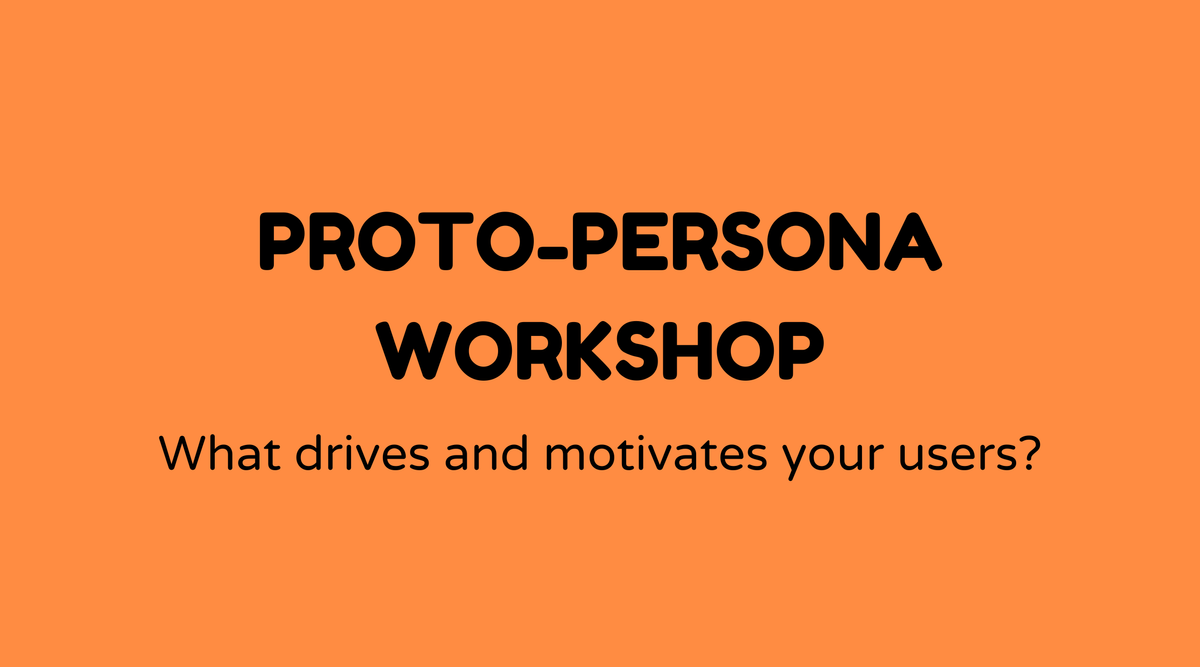Proto-personas workshop

Overview of Proto-Personas Workshop
In today's fast-paced landscape of product development, understanding your audience is vital. A Proto-Personas Workshop serves as a strategic session that helps teams gain an initial grasp of who their potential customers could be. Unlike conventional personas that emerge from extensive research, proto-personas are rooted in assumptions and anecdotes, offering a quicker, though less thorough, viewpoint.
By conducting a structured workshop, teams can develop foundational proto-personas that inform their decision-making. This activity encourages collaboration among team members, each bringing their unique insights and resulting in a collective understanding of the target audience. Notable organizations like IDEO utilize similar techniques within their innovative processes.
Why Proto-Personas Workshop Matters
The importance of a Proto-Personas Workshop is considerable. It enables teams to direct their creative energy toward envisioning their users from the project's beginning. The workshop nurtures empathy, aligning everyone with the user's perspective before entering development phases.
Additionally, it acts as an initial guide, steering ideas and strategies toward what customers may find valuable. By implementing a proto-personas workshop, teams can reveal potential user expectations and incorporate them into the design and development processes. This approach results in products that are more relevant to customers, enhancing their engagement. By emulating successful companies like Google, this method can lead to innovations in user-centered design.
What is Proto-Personas Workshop
What exactly is a Proto-Personas Workshop? Essentially, it's a brainstorming session that unites diverse team members to co-create fictional characters that represent different segments of their potential user base. These proto-personas draw from the team's existing understanding, assumptions, and anecdotal knowledge of the market.
During the workshop, participants engage in discussions, share experiences, and bounce ideas off one another to construct proto-personas. These personas represent a wide array of target users, influencing design decisions later on. Although these personas are basic and hypothetical, they can evolve into detailed, data-driven personas through user research.
How to Conduct a Proto-Personas Workshop
Executing a Proto-Personas Workshop involves several steps:
-
Preparation
- Assemble a diverse team from different departments to offer various perspectives.
- Gather any existing data, user feedback, or market research that could inform the process.
-
Introduction
- Start with a brief overview of proto-personas and their purpose to ensure a shared understanding.
-
Idea Generation
- Encourage team members to share their insights and assumptions about users.
- Use tools like sticky notes or digital boards to document ideas.
-
Grouping and Categorization
- Cluster similar ideas and assumptions together.
- Begin forming distinct proto-persona groups based on these clusters.
-
Proto-Persona Creation
- Develop detailed descriptions of each proto-persona, including demographics, goals, and challenges.
- Visualize these personas through sketches or digital illustrations.
-
Wrap Up and Next Steps
- Discuss how these proto-personas can inform future user research and design choices.
- Document the results and create a roadmap for additional persona development.
Sample Agenda of Proto-Personas Workshop
Here’s a sample agenda to illustrate the process:
| Time | Activity |
|---|---|
| 10:00 AM | Welcome & Introduction |
| 10:15 AM | Overview of Personas and Proto-Personas |
| 10:30 AM | Individual Brainstorming Session |
| 11:00 AM | Group Discussion and Idea Clustering |
| 12:00 PM | Lunch Break |
| 1:00 PM | Creation of Proto-Persona Profiles |
| 2:30 PM | Presentation of Proto-Personas |
| 3:00 PM | Conclusion and Next Steps |
Examples of Proto-Personas Workshop
Here are some ways companies have utilized Proto-Personas Workshops effectively:
-
A tech startup seeking to create a productivity app held a proto-persona session to brainstorm end-users. By involving diverse team members to simulate target users, they designed more intuitive user interfaces that enhanced user engagement.
-
An e-commerce company focused on millennial shoppers through a proto-persona workshop, which led to communication strategies that resonated better with this demographic. They embraced storytelling through influencer collaboration based on insights from the workshop.
FAQs
What distinguishes proto-personas from regular personas?
Proto-personas are based on assumptions and anecdotal insights, while regular personas are supported by comprehensive data and research.
Can proto-personas be applied to all projects?
Proto-personas are beneficial in early-stage projects where research resources or time are limited.
How frequently should proto-personas be updated?
They should evolve as new data and insights are obtained, transitioning to full personas when feasible.
Is it necessary to conduct a workshop for proto-personas?
While workshops encourage collaborative and diverse inputs, proto-personas can also be developed individually by teams with existing insights.
How long does a proto-persona workshop usually take?
Typically, 3 to 6 hours, depending on preparation and participant engagement levels.
What tools work best for proto-persona workshops?
Tools like Miro, FigJam, or even physical sticky notes and whiteboards are recommended for creative collaboration.



